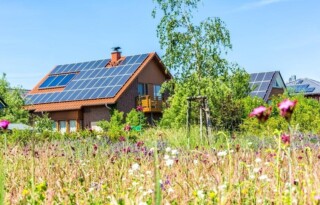Adopting a more sparing approach to the way you consume energy often starts out with a few small steps in the right direction, such as better regulating the thermostat and properly turning off devices and appliances, rather than leaving them on stand-by. However, there comes a point when you need an actual plan if you really mean to cut down on your power consumption. In what follows, we dilate on what an energy savings plan could look like!
Step 1: go for green energy
There is no getting around the fact that we all need energy. But we can choose which kind of energy we use. Green energy is understood to refer to energy derived from renewable sources, such as solar power and wind power. The way to come by green energy is to sign up with the right supplier, but there is nothing to stop you from generating your own renewable current. Simply having solar panels or solar collectors fitted on your roof will see you generate green energy at home, which will drive down your energy bills and allow you to do your bit for the planet. A heat pump is another way of generating sustainable energy at home.
But even if you are heating your home using traditional fuels, such as fuel oil and gas, you can always switch to a more energy-efficient installation, such as a gas or oil-fired condensing boiler.
Step 2: go for energy-efficient and the right heat output level
There can be little doubt that heating is responsible for the best part of your energy bills. By being smart about the way you heat your rooms and your water for household purposes, you can save a lot of energy. Use energy-efficient radiators as well as underfloor heating, both connected to the central heating system, to get the most efficient heat from the energy you pay for.
Step 3: heating your home the ecologically responsible way is a learning experience
Finally, heating your home the eco-friendly way is also a question of habit. The trick is to teach yourself the right habits, such as:
- turning down the thermostat a few degrees at night, which also happens to be better for your health;
- drawing the curtains at night;
- using the air-conditioning as little as possible;
- and aerating your home using a ventilation system.
